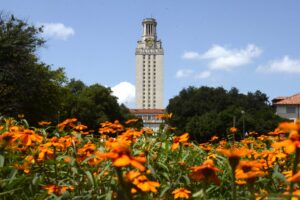AUSTIN, TexasThe Bureau of Economic Geology at The University of Texas at Austin has received a 10-year, $38 million subcontract to conduct the first intensively monitored, long-term project in the United States studying the feasibility of injecting a large volume of carbon dioxide (CO2) for underground storage.
The project is designed to build public assurance about the use of carbon sequestrationstoring CO2 undergroundto reduce atmospheric emissions.
The project is a phase III research program of the Southeast Regional Carbon Sequestration Partnership (SECARB), funded by the National Energy Technology Laboratory of the U.S. Department of Energy (DOE), and managed by Southern States Energy Board of Norcross, Ga. Denbury Resources Inc. of Plano, Texas, will host and support in-kind the Bureau of Economic Geology-led field project.
“This is the next step in a series of bureau-led experiments to test much-needed carbon capture and storage technologies,” said Texas State Geologist Scott W. Tinker, director of the Bureau of Economic Geology. “We look forward to working with the DOE, SECARB, Denbury Resources and our many technical partners worldwide to make this a success.
“I am very proud of our carbon research team led by Susan Hovorka,” Tinker said. “They are the reason the Bureau of Economic Geology has been chosen for this historic 10-year effort to reduce emissions.”
The bureau’s project will study the feasibility of injecting large volumes of CO2 at high rates into deep brine reservoirs. Such injection projects have the potential to reduce the volume of greenhouse gas emitted into the atmosphere. The project has been designed to develop best practices for future large-volume injections by gathering a greater variety of subsurface data than any previous experiments. Key issues include estimating the CO2 storage capacity of brine reservoirs, understanding the effects of injection pressure and developing methods for documenting retention of CO2 in the injection zone.
The SECARB partnership will demonstrate CO2 injection rate and storage capacity in the Tuscaloosa-Woodbine geologic system that stretches from Texas to Florida. The region has the potential to store more than 200 billion tons of CO2 from major point sources in the region, equal to about 33 years of U.S. CO2 emissions overall at present rates.
Beginning this fall, the project will inject CO2 at the rate of one million tons per year, for up to 1.5 years, into brine up to 10,000 feet below the land surface near the Cranfield oil field about 15 miles east of Natchez, Miss. Experimental equipment will measure the ability of the subsurface to accept and retain CO2. The study will be supported by Denbury Resources’ CO2 enhanced oil recovery operations at Cranfield. Denbury Resources will supply CO2 from its Jackson Dome.
The bureau’s Gulf Coast Carbon Center, an industry-academic partnership, has been developing expertise to design and conduct carbon sequestration tests since 1998. Gulf Coast Carbon Center sponsors include KinderMorgan, BP, Chevron, Praxair, NRG, Entergy, Schlumberger, Marathon Oil Corporation, Shell, Luminant, Lower Colorado River Authority, Austin Energy and the Jackson School of Geosciences at The University of Texas at Austin.
The project will involve 20 research partners worldwide, including the University of Mississippi, Mississippi State University, Schlumberger, Advanced Resources International, Southern Company and four national labs.
For the past two years, the Bureau of Economic Geology has led Texas’ effort to win the $1.5 billion clean coal project known as FutureGen. FutureGen involves the kind of large scale CO2 sequestration that would follow closely on the heels of the Cranfield injection project. A final announcement for FutureGen is expected sometime late in 2007.
For more information contact: J.B. Bird, 512-750-3512; Katherine Jolly, 512-471-7113.



